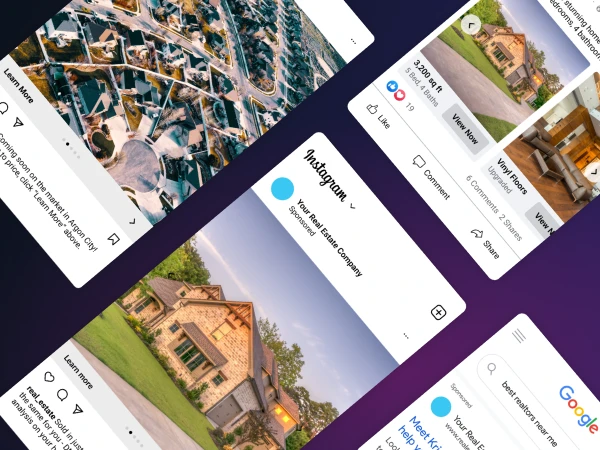
Tips for restaurant online reviews (and why they matter)
Share
Schedule a 30-min marketing strategy call with our team
Online reviews are crucial for local restaurants, especially as we move into 2024. Over 98% of consumers read reviews before visiting or ordering from a restaurant. Reviews directly influence revenue, with just a one star increase tied to a 5-9% jump in sales. Clearly, online reputation now shapes the success of dining establishments around the world.
Yet many restaurants still lack an intentional strategy for generating online reviews at scale and reaping these benefits. That’s where this article of tips for restaurant online reviews comes in. We’ll explore the most effective ways to collect more qualified reviews across today’s top platforms.
Key takeaways
This article covers several tips for restaurant online reviews to drive growth entering 2024. Key learnings include:
- Online reviews critically influence revenue – positive reputations earn trust and visibility to increase reservations and orders. A one star higher average rating directly equals 5-9% sales gains.
- Restaurants must prioritize facilitating review collection before, during, and after on-premise dining occasions across channels where their clientele are most active. Surveys and table codes should make sharing feedback habitual.
- While incentives for ratings risk credibility if mishandled, structured programs providing discounts or contest entries for any reviews left tend to deliver more volume. Just avoid anything conditioning rewards on specific high scores.
- Quick, detailed responses to address what exactly is being improved based on each complaint reassure customers and prospects monitoring restaurants’ responsiveness.
- Analyzing review data for patterns offers insights to continually enhance operations and the guest experience. Reflect on common themes to address.

Choose review collection channels wisely
One of the first tips for restaurant online reviews is choosing the right review channels and platforms to focus collection efforts on. While niche review sites exist, restaurants should prioritize channels that drive the most visibility.
For most diners, this means optimizing and monitoring profiles on Google, Yelp, Facebook, and OpenTable. Integrating review collection tools with reservation systems proves highly effective, capturing feedback right after dining experiences while top of mind. Just make sure to abide by platforms’ guidelines, avoiding offering incentives specifically in exchange for 5-star ratings.
Why should you avoid offering incentives for 5-star ratings?
Having offers or discounts in exchange for 5-star reviews is often against review platform guidelines. But, more importantly, it typically damages credibility. Consumers quickly recognize when reviews seem inauthentically or unrealistically positive. Beyond distrust, outright bans can occur if platforms suspect manipulation. For long-term success, restaurants need abundant honest feedback reflecting genuine experiences – the core value reviews provide.
Check out this article from the Harvard Business Review about the pros and cons of soliciting customer reviews.
Restaurants relying more on delivery and takeout should also emphasize channels like UberEats. The key is identifying where your customer base discovers and engages with your brand digitally. Then, make review sharing frictionless on those platforms.
Make review collection part of your process
Some other tips for restaurant online reviews is to actively facilitate review generation throughout the customer journey. Feedback should be captured immediately post-meal, when impressions remain fresh.
Email surveys offer one method to accomplish this. Messages can thank guests for dining while prompting them to rate aspects of their experience. Table tents and printed codes on receipts also effectively point diners directly to leave reviews.
During visits, managers can verbally check on satisfaction and remind patrons that feedback is appreciated online. Comments shared in-person give staff real-time insights while priming customers to elaborate through ratings.
Streamlining review collection as an operational habit is crucial for amassing volumes that boost visibility. Staff incentives further motivate diligent facilitation.

Incentivize reviews ethically
While offering incentives risks compromising authenticity if mishandled, carefully structured review rewards do drive higher response rates. Restaurants can avoid directly paying for ratings by instead providing discounts, loyalty points, or contest entries in return for receiving feedback.
Occasional raffles, gift card giveaways, and social media competitions likewise increase review quantities without appearing as outright purchase. Just ensure no actual or perceived quid pro quo for five-star ratings exists. Also disclose when requested by platforms.
The emphasis should stay on wider review generation rather than perfect scores. Higher volume enables more data to spot and respond to recurring complaints. Keep incentives ethical and focus on driving more total reviews.
Respond quickly and thoroughly
Collecting abundant reviews expands opportunities to showcase responsiveness and remedy service issues. To leverage feedback:
- Set up monitoring alerts to rapidly detect and assign incoming reviews for immediate response.
- Craft replies addressing specific concerns raised, not just generic apologies. Detail any corrective actions implemented pertaining to complaints.
- Maintain consistent presence replying daily, thanking happy customers and reassuring the dissatisfied. Response speed and detail increase perceived accountability.
Getting the first reply empowers restaurants to share their side transparently. This visibility into investigating issues also reassures the broader audience monitoring many locations’ consistency.
Analyze review content for insights
The substance within reviews offers further value for restaurants to systematically analyze. Software can detect frequent topics and quantify sentiment changes over time.
Operational teams should meet frequently to review these dashboards highlighting what improvements reviewers suggest most often. Does food quality or accuracy suffer? Are servers criticizing corporate decisions? Do guests feel prices increased unjustifiably?
Drilling into the language within reviews transforms them from mere perceptions into insights to drive tangible betterment. Rather than view ratings as judgements, leverage feedback opportunities to grow.
We recommend checking out Ovation to help monitor your reviews across multiple channels and to more easily analyze sentiment and concerns.
Tips for restaurant online reviews
In closing, online reviews inescapably influence today’s restaurant landscape. Yet many owners still underestimate their quantifiable impact on visibility, guest acquisition, and profit growth. Those investing the effort to seamlessly facilitate feedback, ethically incentivize ratings, monitor carefully, respond thoughtfully, and analyze patterns will reap the rewards of five-star reputations drawing in more diners.
A proactive approach to managing multi-location brands’ online presence is essential for sustainable success as the importance of reviews continues rapidly rising into the future.
For additional tips, check out this podcast episode “$$$ in the stars: Reviews to revenue”:

Share
Subscribe to our blog
Don’t miss a beat in the fast-changing local digital marketing landscape — sign up to stay ahead of the curve!






